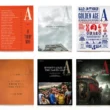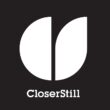Naspers, of South Africa, is preparing to de-merge Africa’s largest TV group MultiChoice whose DStv was a pioneering digital satellite broadcaster when it launched in 1995. With its Showmax streaming service, MultiChoice provides some 14m subscribers (half in South Africa) with original content and international programmes, including English Premier League football, Formula One, and Game of Thrones.
The $3bn-revenue company makes pre-tax profit of $400m and claims to be “one of the fastest growing pay-TV operators globally” so analysts reckon the 2019 IPO may be valued at $6bn. The de-merger was hailed by the Naspers CEO as “a significant step as we continue our evolution into a global consumer internet company.” It’s a simple enough statement from a 103-year-old company which has dramatically morphed from a traditional media group into one of the world’s savviest tech companies with investments in 130 countries.
What started as the publisher of a single daily newspaper in Cape Town is now the world’s 65th largest listed company. That phenomenal climb has been propelled almost entirely by China’s largest internet group Tencent, in which Naspers invested $32m (for a 40% stake) back in 2001. Tencent’s market capitalisation is now a whopping $358bn. Naspers’ own value is currently some $90bn – less than just the price of its 31% stake in the Chinese company. But there is much more to Naspers’ place as Africa’s most valuable company, which is consolidated by its fast-growing operations across digital media:
Classifieds: Its companies OLX, letgo, Avito and Dubizzle have more than 330m monthly active users around the world across 41 markets. Revenues last year grew 47% to $628m.
Retail: Its etail and online travel operations are spread across Central and Eastern Europe, India and Africa, and include eMAG, Takealot and MakeMyTrip. Revenues grew 36% to $2.1bn
Payments: Its PayU is one of the world’s largest online payment service platforms, with operations in 17 markets across Africa, the Middle East, Central and Eastern Europe, India, and Latin America. The online payment systems are made for emerging markets where credit cards and PayPal don’t always work. It also has investments in Kreditech and Remitly. Revenue grew by 58%.
Food delivery: It claims leadership in 40 markets through majority-owned iFood, with minority holdings in Swiggy and Delivery Hero. Total volumes and revenue grew by 65%.
Naspers also has 28% of Mail.ru, the leading Russian internet company, and a range of investments in digital startups. Its stakes in private tech companies include 70% of Brazil’s Movile, a mobile platform for content, food delivery and tickets sales in Latin America.
Altogether, Naspers has invested some $10bn in media-tech companies around the world and has built a reputation as a cash-rich investor which gives companies the room to operate independently, takes a long-term view and has global reach. It’s a good partner, has been described as “the biggest tech investor that Silicon Valley ignores,”and makes the majority of its revenue in Brazil, Russia, India, China and South Africa. But the Naspers’ stock market valuation worries investors because of the way the Tencent stake is discounted. Hence the need for some divestments.
For all the dominance and high margins of MultiChoice pay TV, its longterm is clouded by the arrival of Netflix (which is expected to have 500,000 African subscribers within 18 months) so the IPO may be just in time. Naspers’ original publishing business, Media24, has no such prospect. It was established as National Press, to produce a Dutch-language newspaper for South Africa’s Afrikaner population in 1905. The company and its publications became unsubtle mouthpieces for the National Party, which came into power in 1948 and instituted the apartheid system of racial segregation that continued until 1994.
Twenty-four long years later, Media24 is still South Africa’s leading media group, publishing some 40 magazines, 80 newspapers and a growing range of news and lifestyle digital services. But the print-centric company is now far from the core of the parent company whose CEO always sounds a bit defensive when discussing it. No wonder. Last year Naspers made trading profit of $3.4bn on revenues of $20.1bn. The Media24 contribution was invisible: trading losses of $30m on flat revenues of $374m. It didn’t even merit a mention in the press release.
So, the traditional media subsidiary – with all the familiar challenges of print decline and revenue-light digital – is feeling pretty unwanted by a parent company whose focus is miles away. But Naspers’ recent public commitment to invest $300m specifically in South African startups and the dark history of its regretted involvement in apartheid are clues to the sensitivities that may prevent a simple sale of Media24.
As the dominant corporation in a country with plenty of growth challenges, Naspers might face a backlash if it risks the future of the newspapers, magazines and digital media that help to define South Africa. It may instead explore the possibility of a creative partnership with an international media company to revitalise Media24. That may even be the brief for the publishing company’s newly-appointed CEO.
Potential partners could include two familiar media companies that have successfully diversified: Hearst Corp (with which Media24 publishes South Africa editions of the magazines Men’s Health, Women’s Health, Runner’s World and Bicycling); and Axel Springer with which it launched the local edition of Business Insider earlier this year.
Either of those family-controlled companies could inject growth into Media24 through events, video channels, and content-linked e-commerce. They might also welcome the opportunity of wider collaboration across digital media and elsewhere in Africa. Naspers is the cash-rich, hands-off partner that any media company would want. Just watch.




